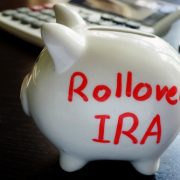The Self-Directed IRA for Beginners: Know the Basic Steps
Unfamiliar with how a Self-Directed IRA might fit within your retirement plan? Overwhelmed by all of the investment options, or all of the unfamiliar terms like 401(k), Roth IRA, SEP-IRA, and more? Then it’s time to take it back to basics. Understanding the Self-Directed IRA is easy, but it requires breaking down some of the basic steps and terms, so they make sense for a new investor. To that end, let’s examine the basic steps involved with setting up a Self-Directed IRA and beginning investing:
Step #1: Select the Type of Account
Too many investors let this part of the process intimidate them. But the truth is, it’s easy to choose the type of account you want. You simply need to know your own circumstances and the priorities you have. Here are some of the most popular accounts for Self-Directed IRAs that you’ll want to consider:
- IRAs: Roth IRAs and Traditional IRAs have the same contribution limits, but they’re taxed differently. A Traditional IRA includes tax-deductible contributions for taxing on the back end (i.e., when you take money out for your retirement), while a Roth IRA doesn’t include tax-deductible contributions, but allows for tax-free distributions upon retirement. We include a “New account checklist” to help make sense of everything you need.
- Solo 401(k): A Solo 401(k) plan is designed as an independent form of 401(k) plan. That means that it allows for high contribution limits that help you reduce your tax burden now. But a 401(k) plan still will mean taxation upon taking distributions in retirement.
- SEP-IRA. What is a SEP-IRA? It’s a Simplified Employee Pension IRA, which is to say it’s an IRA that allows high contribution limits for self-employed individuals. Keep in mind that if you have a company for which you set up a SEP-IRA, you will also offer these retirement benefits to employees. But many self-employed individuals like the SEP because of its high contribution limits and simple structure for sole proprietorships.
Step #2: Fund Your Account
Once you know what type of account you want to use, the next step is to fund it. There are generally three ways you can fund an IRA:
- If you’re moving from, say, a Roth IRA to a Roth IRA, you won’t have too many complications—it’s easy to directly move these funds into the new account.
- In a rollover, you’ll receive the funds from a retirement account and be required to put those funds into the new retirement account before a specified date. This is an indirect way to transfer money, but it can potentially allow you to move funds from one type of account to another type.
- Deposit/direct funding/contribution. Once you establish an IRA, you can simply put money into it in the form of a contribution. Your contributions are, of course, limited by the IRS and the rules of the account you have, but it’s also the easiest and most direct way of thinking about funding your retirement account.
Step #3: Determine Your Investing Strategy
At our How It Works page, you’ll find that we outline many of the investment capabilities you’ll have with your Self-Directed IRA. This is when you’ll have to do some directing. Why did you get into the Self-Directed IRA in the first place? What kinds of investments are you interested in? Experienced in? You can choose from a number of investments now, including real estate, precious metals, private entities, and more.
For more information, check our How It Works page to get a sense of what the basic steps of using a Self-Directed IRA are. You can also contact American IRA directly by calling 866-7500-IRA.







